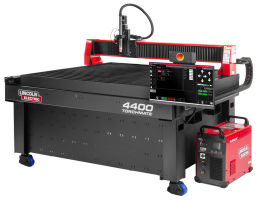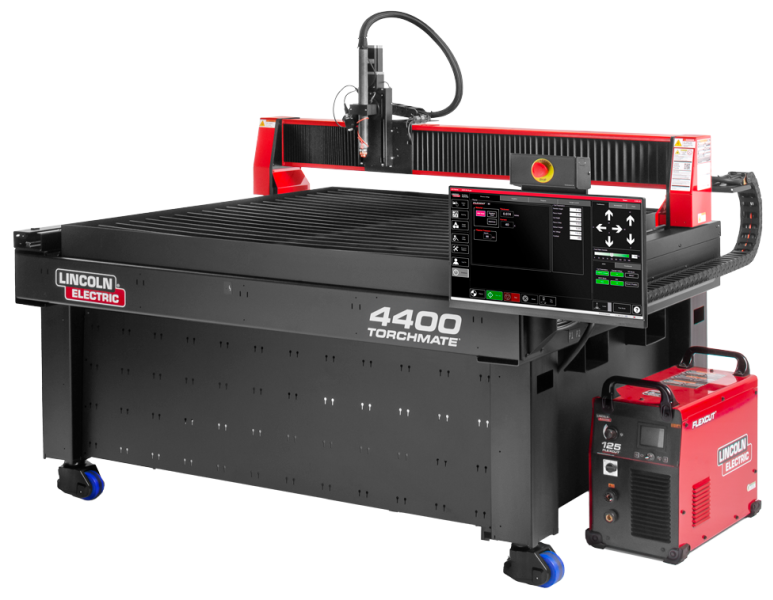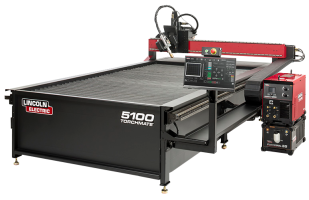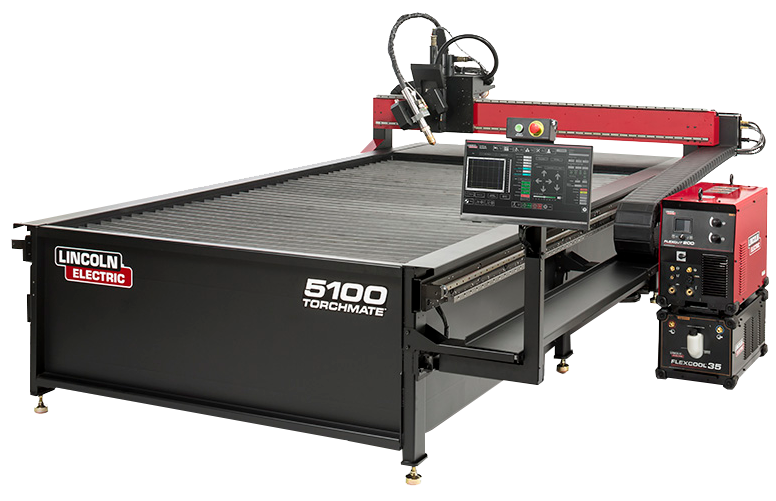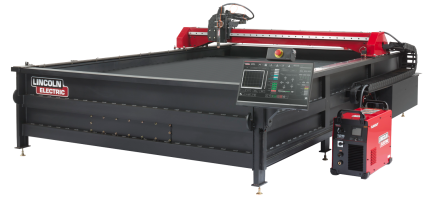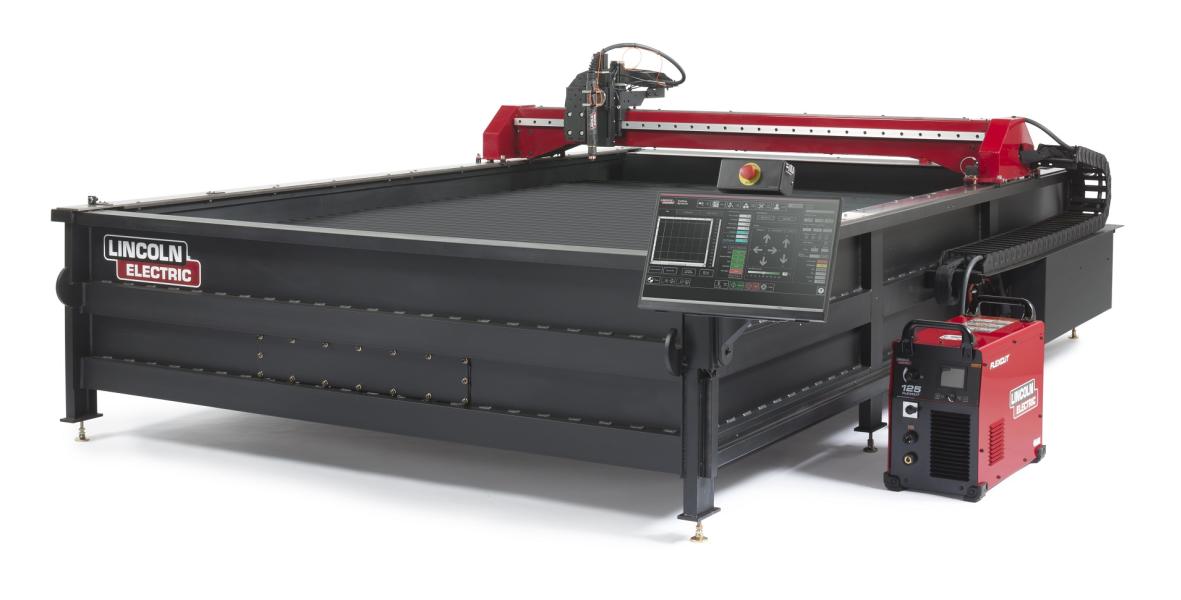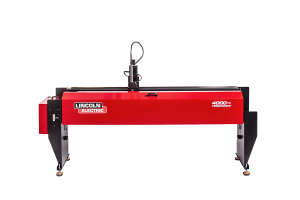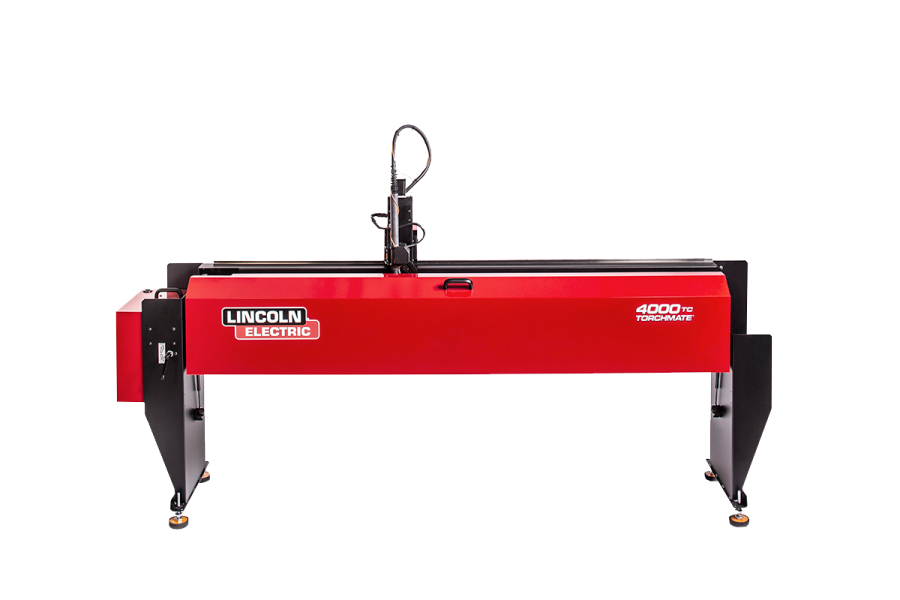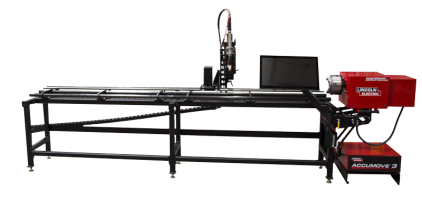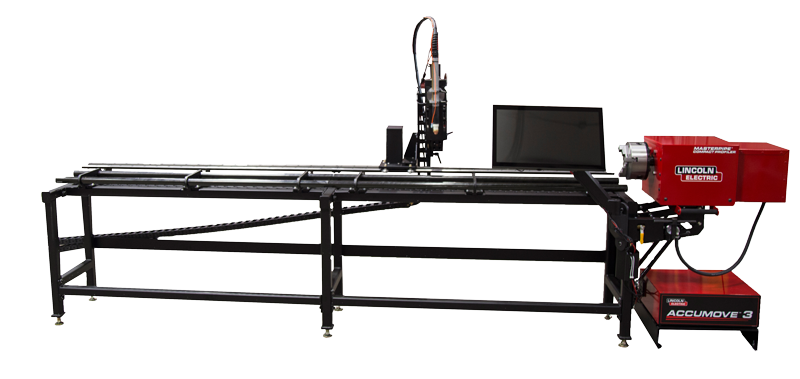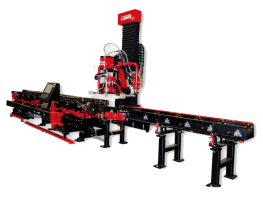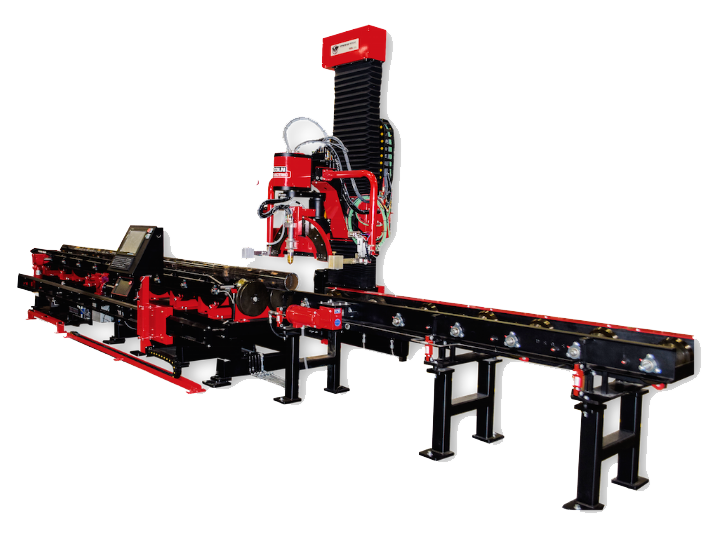Early shape cutting machine patents
 U.S. Patent No. 1,324,005 was issued to Mr. Worthy C. Bucknam on December 2, 1919.
U.S. Patent No. 1,324,005 was issued to Mr. Worthy C. Bucknam on December 2, 1919.
Mr. Bucknam, who had previous patents going back to 1916 designed this as a cutting machine for trimming the flanges on boilers. It uses a pivoting column that supports a track extending outward from the column. A carriage, mounted on the track, rolls in and out as a roller follows the profile of the flange.
The two actions, the pivoting of the column, and the rolling of the carriage, provide full freedom of movement for the horizontal torch head, which can be seen above as part no. 40.
 Patent no. 1,869,836 was issued to James L. Anderson on August 2, 1932. Like most patents issued after the original pantograph design was patented in 1917, this one deals with a minor improvement.
Patent no. 1,869,836 was issued to James L. Anderson on August 2, 1932. Like most patents issued after the original pantograph design was patented in 1917, this one deals with a minor improvement.
In this case, it is the method by which the overhead template is secured to the upright column. Anderson's claim was for the placement of stress upon the template at the point labeled 14, above. The tension caused by tightening the bolt at 14 presumably held the template in place better.
 Patent no. 2,494,532 was issued to Mr. Clarence P. Ager on January 17, 1950. The fact that he filed for the patent on April 20, 1945 shows the typical lead time for processing and issuing patents in the early '50s.
Patent no. 2,494,532 was issued to Mr. Clarence P. Ager on January 17, 1950. The fact that he filed for the patent on April 20, 1945 shows the typical lead time for processing and issuing patents in the early '50s.
The machine shown in the illustration is a typical of the pantograph units that have been produced since the early 1920s and are still in production today. The patent here, was issued for the design of the overhead template holder.
The template holder has a spur gear controlled by a lever. The gear engages with teeth on the overhead arm. The torch is lit, and the powered magnetic tracer actuated. The lever is pulled slowly, moving the template, tracing rotor, and cutting torch an inch or so.
The template is then locked in place, and rotor follows the template edge, cutting out the desired piece. The fact that the torch was slowly moved to its starting position while the rotor was already in motion, was credited with eliminating a starting burr on the cut face.



